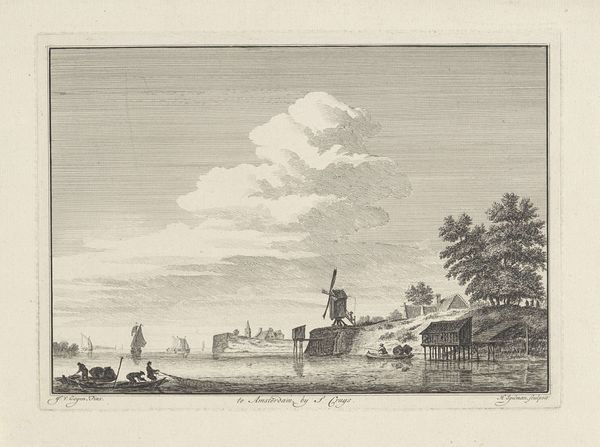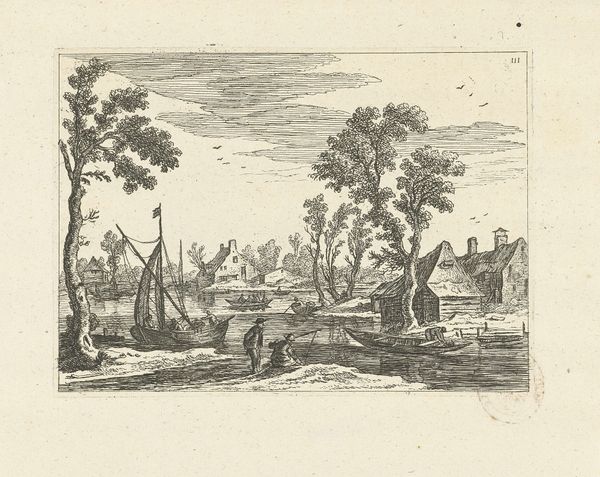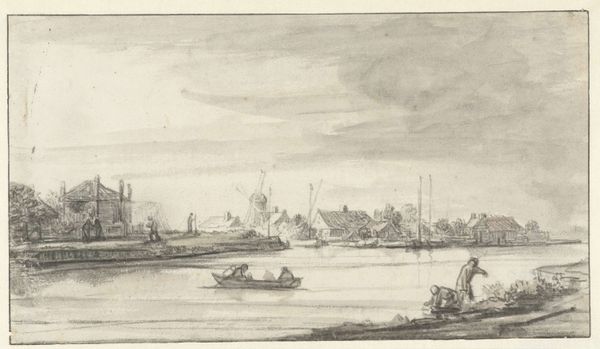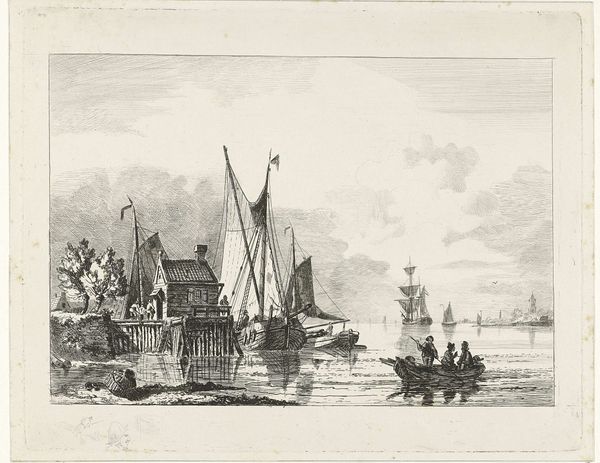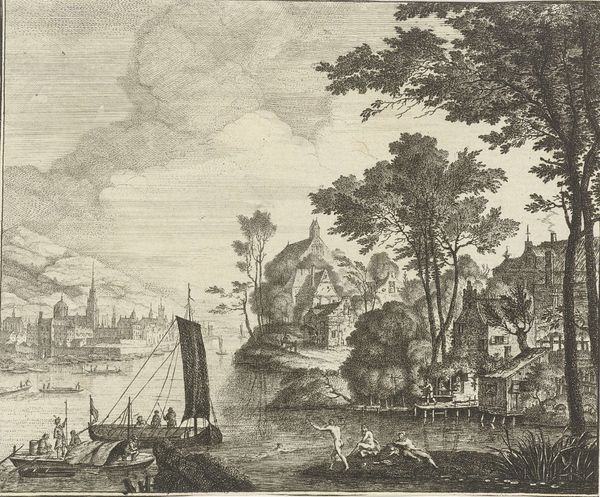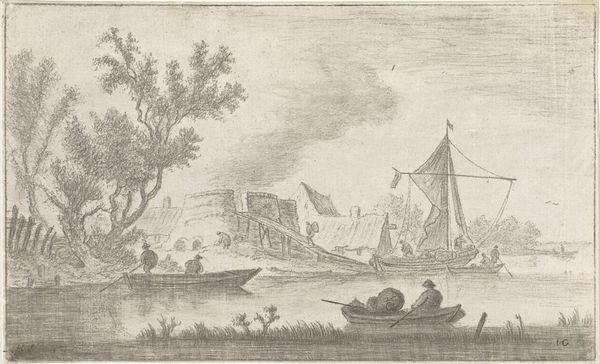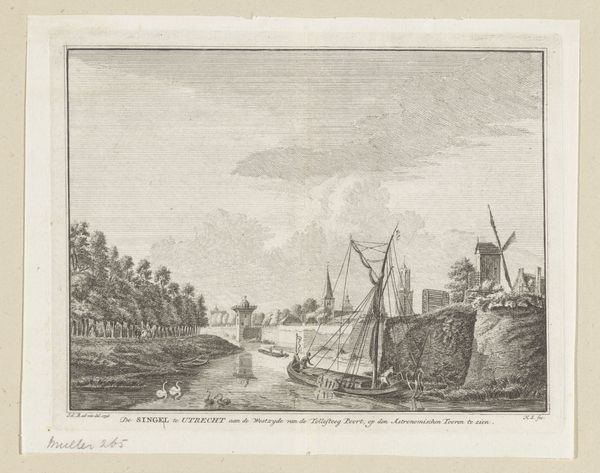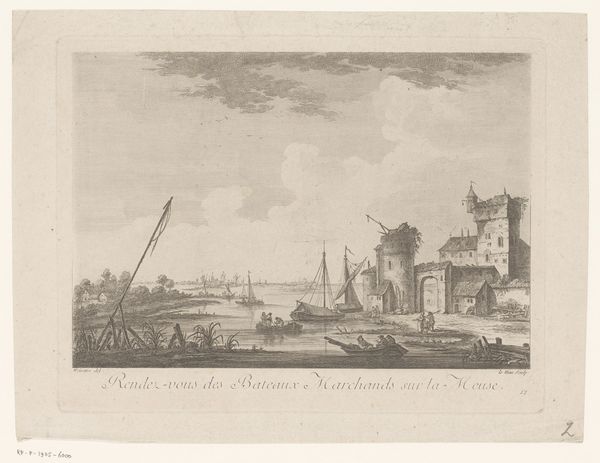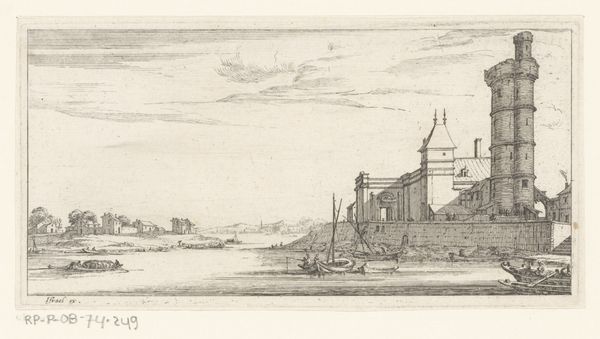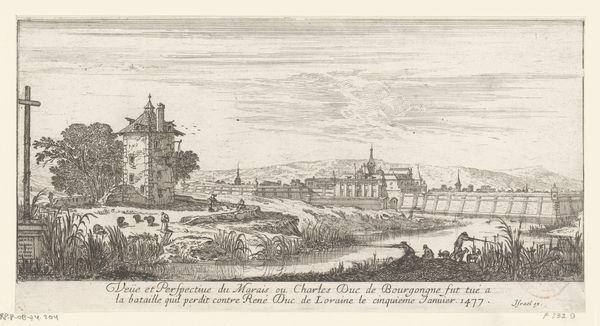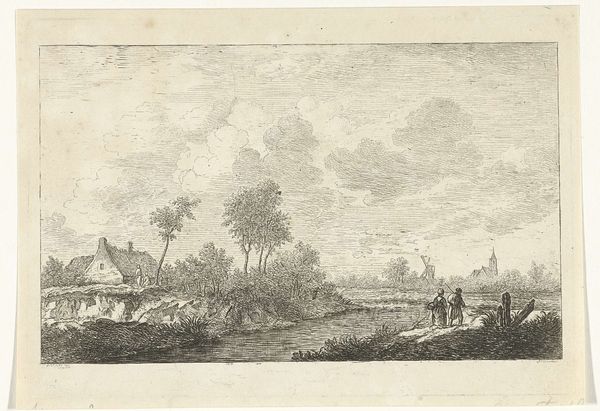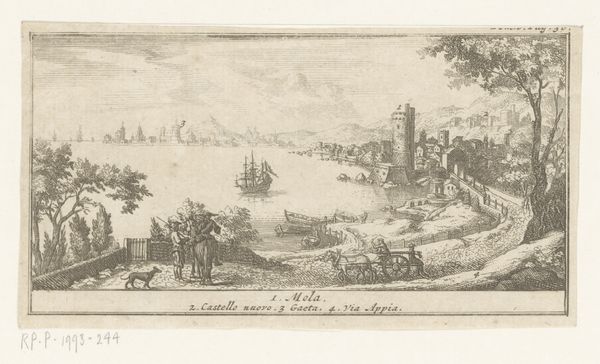
print, etching
#
light pencil work
#
mechanical pen drawing
# print
#
etching
#
pencil sketch
#
old engraving style
#
sketch book
#
personal sketchbook
#
sketchwork
#
pen-ink sketch
#
pen work
#
pencil work
Dimensions: 138 mm (height) x 194 mm (width) (plademål)
Editor: So, we're looking at "Havn med skibe, der losses," or "Harbor with unloading ships," by Jeanne Francoise Ozanne, created sometime between 1750 and 1795. It's a print, an etching actually, and the detail is incredible. What strikes me is the depiction of daily life; you can almost feel the bustle of the harbor. What do you see in this piece, from your perspective? Curator: The print is compelling in how it documents labor. Look closely at the figures: the longshoremen unloading cargo. The work is not romanticized; rather, the artist gives a relatively unvarnished glimpse into the engine of maritime commerce. Consider the material reality: ships needing to be unloaded, goods needing to be moved, people needing to be fed. This etching is a document of a specific economic activity. Notice the clear demarcation of class through labor. The people who load the ships, how they are represented materially versus the owners who would be purchasing these goods and resources, how they are seen. Editor: That's a fantastic point. The ships themselves – the tools of this commerce – also feel important, beyond just being scenic elements. Are you suggesting the ships themselves become raw material for understanding its meaning and impact on society? Curator: Exactly. The materiality of the ships -- their construction, the resources they required, the labor involved in building and sailing them – are crucial. The print isn't just about aesthetics; it's a record of material culture, of production and consumption, all filtered through the labor required for them to exist. I am struck with the importance to depict all of this labor together to tell that visual story. Editor: I've never considered art as documentation this way, it's more than just what is represented on the paper itself. Thank you, that really enriches how I interpret it now. Curator: Indeed, understanding the processes and materials expands our grasp of art history's context. This allows one to comprehend art beyond just pictorial representation.
Comments
No comments
Be the first to comment and join the conversation on the ultimate creative platform.
